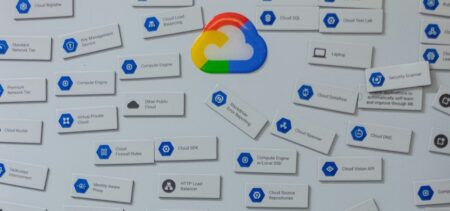Two incredible forces are changing the way applications are developed and delivered in the ever-changing field of software development: artificial intelligence (AI) and low-code development. The combination of these technologies offers a revolution in which the conventional development process can be transformed, and complicated software can be produced quickly and intelligently.
Low-code development is a paradigm shift in application development that gives development teams unprecedented speed and agility in the creation and delivery of applications. However, by incorporating intelligence, automation, and predictive capabilities across the whole production process, artificial intelligence (AI) has completely transformed the game.
This article will examine the ways in which AI and low-code development work together, demonstrating how this potent duo is set to revolutionize software delivery. We’ll also discuss OutSystems, a visionary pioneer in rapid software development, recognized for its leadership in low-code and delivering AI-assisted software development.
The Low-Code Development Landscape
In the software development industry, low-code development is a revolutionary method that is gathering a lot of momentum. A recent survey showed promising results, indicating that 55% of developers felt somewhat or extremely enthusiastic about using an AI pair programming tool for code generation. It enables businesses to rapidly produce apps with little need for manual coding, minimizing complexity and maximizing productivity throughout the development process.
Understanding Low-Code Development
Software creation is being revolutionized by low-code development. This method provides an easy-to-use, visual way to create applications that significantly lessens the need for a lot of manual coding. Thanks to low-code, developers may now concentrate on the logic and operation of applications instead of getting bogged down in intricate coding syntax.
Benefits of Low-Code
The advantages of low-code development are numerous. It leads to significantly faster development timelines, cost reduction, and a broader spectrum of participants in the development process. By reducing the necessity for intricate coding, organizations can expedite their development processes while allocating tasks to individuals with varying technical expertise.
Market Trends and Adoption
Low-code development is a dynamic field with continually evolving trends. Integration with artificial intelligence (AI) and an emphasis on mobile application development are among the latest. Additionally, low-code is not confined to specific sectors, as it finds applications in diverse industries, including finance, healthcare, and manufacturing. Each sector benefits uniquely from low-code solutions.
The Impact of AI on Software Development
Artificial Intelligence (AI) has become a driving force in software development, revolutionizing the way applications are designed, built, and maintained. Let’s explore the role of AI in the modern software development landscape and the key technologies that are reshaping the industry.
Role of AI in Modern Software Development
Software development now relies heavily on AI, which provides software intelligence, automation, and predictive capabilities. Artificial intelligence has the potential to revolutionize industries by increasing productivity and reducing manual labor. It makes it possible for software to change, grow, and advance over time.
Key AI Technologies in Development
A variety of technologies that are essential to contemporary software development are included in AI. Among the key AI technologies propelling industry innovation are machine learning, natural language processing (NLP), and predictive analytics. Software that uses machine learning is able to adapt, automate processes, and make decisions based on facts. While predictive analytics enables applications to predict trends and offer data-driven recommendations, natural language processing (NLP) enables applications to comprehend and produce human language.
Real-World Impact
One compelling example of the transformative impact of AI in software development is GitHub Copilot. Developed in collaboration between GitHub and OpenAI, GitHub Copilot is an AI-powered code completion tool integrated directly into popular code editors.
GitHub Copilot leverages OpenAI’s Codex, a language model trained on diverse codebases, to generate context-aware code suggestions as developers type. This AI-powered assistance significantly speeds up the coding process by offering whole lines or blocks of code based on natural language prompts and the surrounding code.
The Convergence of Low-Code and AI in Software Development
In recent years, the convergence of low-code development and artificial intelligence (AI) has ushered in a new era in software development. This amalgamation represents a powerful fusion of two transformative technologies, redefining the way applications are designed, built, and maintained.
The Power of Combining Low-Code and AI
The effects of combining AI with low-code development are nothing short of revolutionary. The development process is made easier, faster, more accessible, and more efficient with low-code. Low-code makes it possible for people with different degrees of technical proficiency to be involved in the application development process through its visual, user-friendly approach. Business analysts, subject matter experts, and other non-technical stakeholders are empowered to contribute their ideas and requirements as a result of this democratization of development, which eventually results in more effective applications.
At the same time, artificial intelligence (AI) adds intelligence, automation, and predictive capabilities to software. It reduces manual labor and error-proneness by introducing automation in operations such as code generation. Furthermore, AI provides prognostic insights that assist developers in making data-driven decisions and continuously enhancing their apps.
The combination of low-code’s efficiency and accessibility with AI’s intelligence and automation accelerates the development life cycle and opens up new possibilities for innovation. Organizations can create applications rapidly, with reduced costs and a focus on user experience and functionality.
AI-Enhanced Low-Code Development
AI supercharges low-code development in various ways:
- Automation: AI automates repetitive development tasks, such as code generation, testing, and deployment. This reduces the need for manual labor and accelerates development timelines.
- Predictive Insights: AI offers predictive capabilities, enabling applications to make data-driven recommendations and detect anomalies or potential issues. Predictive analytics, driven by AI, allows applications to forecast trends and make informed decisions.
- Machine Learning: Machine learning, a subset of AI, equips applications with the ability to adapt and learn from data. This is leveraged in various ways, such as personalized recommendations in e-commerce applications and natural language processing for chatbots and virtual assistants.
- Natural Language Processing (NLP): NLP is a key AI technology that finds widespread application in software development. It enables software to understand, interpret, and generate human language, making it valuable in applications like sentiment analysis, language translation, and chatbot interactions.
Advantages of AI-Driven Low-Code Development
AI-driven low-code development offers a myriad of advantages that are reshaping the way organizations approach software creation. Let’s have a closer look at these benefits.
Accelerated Development Timelines
The accelerated development timeframe is one of the biggest benefits of AI-driven low-code development. AI shortens the time needed to develop and launch apps by automating a number of development process steps. As a result, businesses may acquire a competitive edge, adapt quickly to shifting business requirements, and get innovative products onto the market more quickly.
Increased Efficiency
Efficiency is a cornerstone of AI-driven low-code development. AI automates repetitive tasks, from code generation to quality assurance and deployment. This automation reduces manual effort and minimizes the risk of human error. Developers can focus on high-value tasks, such as designing innovative features and functionalities.
Cost Savings
Cost-effectiveness is another compelling advantage. By automating tasks and accelerating development, AI-driven low-code development leads to cost savings. Organizations can allocate their resources more efficiently, reduce development and maintenance costs, and realize a higher return on investment.
Enhanced User Experience
Applications using AI enhancements frequently offer a better user experience. These apps are more engaging and user-friendly because they can comprehend natural language, offer personalized suggestions, and make data-driven judgments. Adoption rises as a result, as does customer satisfaction.
Scalability and Flexibility
AI-driven low-code applications are designed to be scalable and flexible. They can adapt to changing requirements and accommodate increased workloads. This scalability is particularly valuable for organizations experiencing growth or fluctuations on demand.
Accessibility and Inclusivity
Low-code development democratizes the software creation process. Non-technical stakeholders, such as business analysts, can actively participate in application design. This inclusivity ensures that software aligns closely with business needs, leading to more effective solutions.
Competitive Edge
Organizations can obtain a competitive advantage by using AI-driven low-code development. They are able to produce apps with better user experiences, offer creative solutions, and react quickly to changes in the market. They are in a better position than rivals, who depend on conventional development techniques because of this.
Future-Proofing
AI-driven low-code development is future-proof. It enables organizations to create applications that can adapt and evolve as technology advances. With the power of AI, applications can continuously improve and remain relevant over time.
The Role of OutSystems in AI-Driven Low-Code Development
OutSystems is a trailblazing pioneer in the field of AI-driven low-code development, having made significant contributions to the advancement of this revolutionary method of developing software. In this section, we’ll explore OutSystems distinctive contributions and how they enable businesses to fully utilize AI in low-code development.
A Pioneer in Low-Code Development
OutSystems has a rich history as a pioneer in the low-code development space. Since its inception in 2001, the company has been committed to transforming enterprise software delivery. With a vision to support companies as they build the software that matters most, OutSystems introduced a low-code platform that makes it possible to build better apps, faster.
Transformative Generative AI for Application Development through Project Morpheus
OutSystems, a pioneer in low-code development, introduces a new initiative, codenamed Project Morpheus, to advance the integration of generative AI in the application development process. This suite of advanced capabilities allows developers to describe their application concepts using natural language inputs, and the generative AI will do the heavy lifting of building the app. Project Morpheus empowers developers of any skill level–or even none at all– to start building apps even without a clear vision, providing intelligent suggestions to accelerate the iteration cycle. It goes beyond automation, leveraging vast language models to guide developers and propose functionalities based on accumulated knowledge.
Elevating AI Capabilities with Azure OpenAI Connector
In addition to its pioneering Project Morpheus, OutSystems provides a seamless integration with Azure OpenAI through the OutSystems Azure OpenAI Connector. This tool takes artificial intelligence endeavors to new heights, effortlessly connecting users to the advanced AI capabilities of Azure OpenAI while prioritizing security and compliance. It facilitates three essential operations within your applications:
- The Completions function provides accurate predictions based on a simple prompt.
- The Chat Completions feature provides compelling completions for chat messages using the ChatGPT and GPT-4 models.
- The embedding capability delivers vector representations of any input, making it effortless to integrate with machine learning models and other algorithms.
This strategic collaboration between OutSystems and Azure OpenAI opens up new possibilities for developers seeking to leverage cutting-edge AI technologies while maintaining control over their data and ensuring compliance with stringent security standards.
Combining Low-Code with AI
OutSystems has taken low-code development to the next level by seamlessly integrating AI into its platform. This integration empowers organizations to create intelligent, high-performance applications at an unprecedented pace. By combining the benefits of low-code with the power of AI, OutSystems ensures that the software creation process is efficient, effective, and future-proof.
Key Features and Capabilities
OutSystems AI-driven low-code platform offers a range of key features and capabilities, including:
- Visual Development: OutSystems visual development environment allows teams to design applications through a drag-and-drop interface. This intuitive approach makes application creation accessible to both technical and non-technical users.
- AI-Powered Automation: The platform leverages AI to automate various aspects of development, including code generation, testing, and deployment. This automation accelerates the development life cycle.
- Predictive Insights: OutSystems incorporates AI-driven predictive insights into the development process. This enables developers to make data-driven decisions, enhancing the quality and functionality of applications.
- Seamless Integration: The platform seamlessly integrates with existing systems and data sources, making it easy to leverage AI within the organization’s existing technology infrastructure.
- Real-World Applications: OutSystems’\ platform is employed by organizations across diverse industries to create a wide array of applications—these range from intelligent chatbots and recommendation engines to comprehensive business process automation. The platform’s versatility makes it an ideal choice for organizations looking to embrace AI-driven, low-code development.
The Bottom Line
AI-driven low-code development is an appealing option for businesses aiming to innovate quickly without sacrificing cost-effectiveness because it shortens development schedules, boosts productivity, and lowers expenses. By providing scalability, intelligent automation, and predictive insights, it guarantees that applications will not only satisfy present demands, but also grow to meet new ones in the future.
A pioneer in the low-code platform industry, OutSystems is essential to the advancement of AI-driven low-code development. Organizations can construct intelligent, high-performance apps at an unprecedented pace because of the platform’s easy AI integration. OutSystems makes sure that software development is productive, efficient, and future-proof with features like visual development, automation driven by AI, and predictive analytics.
AI and low-code together have ushered in a revolution in software development. This tech gives businesses the ability to adapt quickly to changing market conditions, innovate quickly, and develop applications that revolutionize user experiences. The way that OutSystems has contributed to AI-driven low-code development is evidence of the revolutionary potential of this methodology. The future of software delivery is being shaped by AI-driven low-code development, which is dedicated to efficiency, effectiveness, and future-proofing.















































